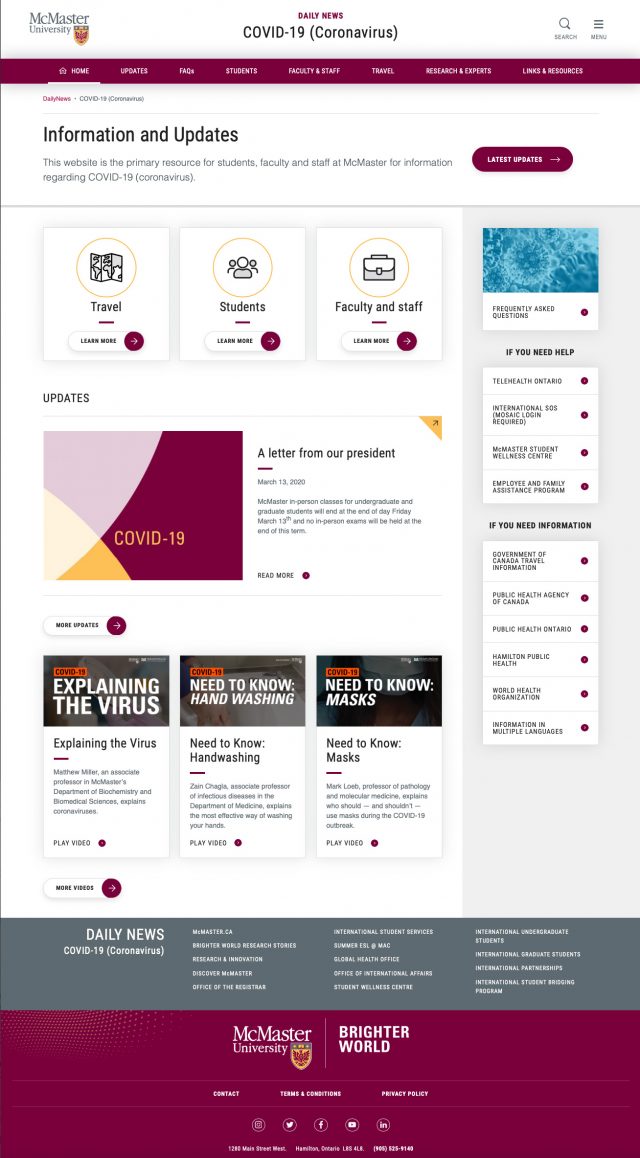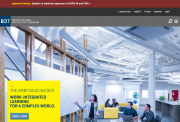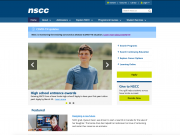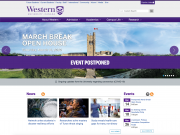Eduvation Blog
Saturday, March 14, 2020 | Category: COVID-19
Coping with COVID-19
Check out all of our COVID-19 coverage and analysis.
An emergent global pandemic puts unprecedented pressure on campus communicators to manage the flow of information in a rapidly-evolving crisis.
The COVID-19 pandemic has captured public and media attention worldwide, creating anxiety and even panic among students, parents, employees and surrounding communities. As centres of global exchange and significant international enrolment, Canadian PSE institutions are in the spotlight – even though to date, very few cases of COVID-19 have been confirmed on our campuses. (See our spreadsheet here for the latest figures.) Institutions have thousands of people living and working in close proximity, studying abroad, working in the community, and caring for patients in hospital settings. Students gather in dorm rooms and cafeterias, gymnasia and classrooms, from seminars of a dozen to lecture theatres of a thousand or more.
The context for COVID-19 precautions and responses is dictated by multiple decision-making bodies, from the World Health Organization to local health units, federal border security agencies and provincial health officers, campus legal counsel and risk managers, insurance companies, and academic senates. Institutional emergency response teams are confronted with a steady stream of intensifying restrictions and requirements from each of these bodies. And changes in the academic calendar and course syllabi are traditionally made over months or years of debate, not in a matter of days or hours. Significant decisions about suspending or cancelling classes often require calling a full meeting of Senate, unless a Senate executive committee has been given emergency powers.
As a result, campus communicators are confronted with limited information, unanswerable questions, continually evolving key messages, conflicting priorities, panicked stakeholders and misinformation spreading rapidly on social media. Some institutions are releasing updates and video messages once or twice each day, while others promise only “weekly updates” (which seems unreasonable).
Iterative Messaging
As I watched institutional announcements unfold, it was particularly striking to see some institutions resisting the inevitable, taking minimal steps toward social distancing and postponing the inevitable. Sometimes these were among the country’s largest research universities, who were reluctant to impose draconian limitations on staff or (particularly) faculty travel, to curtail or cancel large campus gatherings, or to take the drastic step of suspending classes so close to midterm exams and March Break. Once or twice a day, these institutions announced ever-increasing limitations, often forced upon them by provincial health authorities, regional health units, insurance providers or federal regulations. These institutions had the toughest communications challenge, as their messages continually adapted.
By contrast, there was a certain elegance and simplicity to the communications from institutions that made the call early, recognizing the inevitability of suspending events and classes as the only way to “flatten the curve” of the pandemic. This made messaging simpler and less frantic, and allowed staff and students to rethink their plans for March Break once instead of multiple times. Among Ontario institutions, Western University came out comparatively early, announcing at 8pm on March 12th that all classes would be cancelled March 13-17, and would resume online-only from March 18 until the end of term. (Other institutions that evening were still taking an incremental approach, announcing a one-day suspension of classes while they considered their options.)
Then on Friday March 13, when the Quebec government closed all K-12 and PSE institutions for 2 weeks, many institutions began announcing suspension of face-to-face classes for anywhere from 3 days to 3 weeks, sparking plenty of confusion and uncertainty. It seemed like a sound communications strategy when Manitoba’s Red River College announced an immediate “Study Week,” to give it time to assess and study plans for alternative delivery, exams, and work-from-home arrangements for staff.
Web Pages
Understandably, institutional marketers did not want to make the Coronavirus front-page news that prospective students and parents would see the moment they visited the institutional homepage. Traditionally, mid-March is a time when applicants begin visiting campuses and finalizing their choices for fall, and institutional websites focus on promoting positive research news and campus celebrations. At most institutions, information about COVID-19 policies and precautions began to appear on intranet pages and password-protected staff or student portal pages, only rising to public-facing pages, the campus news section, or the institutional homepage when public and media attention became overwhelming.
By the end of day on March 13, almost all of the 53 institutions I have been monitoring had a centralized information page which was being updated twice or more per day, including FAQs and links to government sources. Some include media releases and video messages from the president or provost. Most have links to further information about international travel, events on campus, sick leave policies, and increasingly, alternative delivery of classes. (See the spreadsheet below for links to more than 50 such pages.)
 By March 14, particularly when classes had been suspended, most institutions were promoting their COVID-19 page on the institutional homepage, either through a rotating banner photo, graphic sidebar, or a prominent flag across the top of the page. (See the gallery above)
By March 14, particularly when classes had been suspended, most institutions were promoting their COVID-19 page on the institutional homepage, either through a rotating banner photo, graphic sidebar, or a prominent flag across the top of the page. (See the gallery above)
UNB provides a printable health poster from the province on its COVID-19 website. McGill offers a printable fact sheet from the Public Health Agency of Canada. uWindsor provides downloadable posters on hand washing and flu prevention. Algonquin College provides downloadable fact sheets in 28 languages.
The University of Calgary is providing an online COVID-19 Event Risk Management tool on their website.
One of the most impressive efforts in Canada is at McMaster University, which early on established a microsite (see right) at covid19.mcmaster.ca, which included audience-based FAQs, chronological updates, highlights of medical research, medical experts, and various related resources.
Several smaller institutional websites crashed due to traffic, as thousands of students, staff, parents and members of the general public tried to gather updates on rapidly-changing policies and calendars.
Emails, Hotlines, and Apps
So far, one-quarter of institutions have publicized a dedicated COVID-19 email address for student, staff and public inquiries and self-reporting, and are doing their best to respond promptly using social media personnel during office hours, and an autoresponse after hours. Others have a dedicated telephone hotline; Laurier has a COVID-19 Information Centre staffed 9-12 and 1-4 on weekdays. Red River College invites people to sign up for coronavirus updates by email. Many institutions are also using their campus emergency or safety apps to push messaging out to staff and student smartphones. And some are broadcasting voicemail updates from the president to all staff, such as this supportive message from Sheridan College president Janet Morrison:
“This is an experience that we are going to reflect back upon for years to come and the days ahead will require us to experiment and be flexible. We certainly won’t get everything right on the first try. It is incumbent upon all of us to focus on what we can control, to remain open-minded and positive, and to plan for various scenarios in a situation that is both disruptive and unfamiliar. Now is the time for all of us to lead the way by engaging in evidence-based decision-making and by modeling resiliency, agility, and courage. That is what leaders and educators do.” – Janet Morrison, President & Vice-Chancellor, Sheridan College
Self-Reporting
To track international travel by outbound and inbound students and employees, those experiencing symptoms, or those self-isolating and therefore requiring sick leave or academic accommodations, institutions are establishing self-reporting forms and waiving the usual requirement of doctors’ notes.
Suspending Advertising
With provincial bans on large gatherings, most institutions have postponed or cancelled impending March Break open houses and campus tours, traditionally a key component of their student recruitment cycle. Some, like Seneca College, have tried to recover by organizing an online “virtual open house.” Others have observed that their planned advertising campaigns might seem tone-deaf in the current context, and have abruptly put media buys on hold for the duration of the crisis. Some institutions have realized they need to pull ads for business programs that feature prominent handshakes. (For a particularly obvious non-PSE example, consider how KFC’s “Finger Licking Good” slogan comes across in a time of quarantine. Coors Light has suspended its tone-deaf campaign for “the official beer of working remotely,” originally intended to highlight NCAA March Madness season.) Even social media channels are being more tightly controlled and focused on critical messaging to update stakeholders, rather than the usual light-hearted memes or holiday promotions. A recent survey by Corus found that 18% of Canadians want brands to stop all advertising during the pandemic, and 37% think any advertising still done should focus on how brands are helping during the crisis. CORUS reports a 25% bump in the net positive brand impression of QSR spots with special COVID messages.
Video Messaging
Starting with the president of Harvard University, more and more campus leaders are releasing short video messages to personally convey the seriousness of the situation, and their care and concern for those affected. (Kudos to BCIT president Kathy Kinloch for releasing one of the first in Canada.) Some are releasing one or more video updates per day, such as King’s University College principal David Malloy, and McGill University associate provost Christopher Buddle. George Brown College has the only sign-language video on COVID-19 that I have seen so far.
I am maintaining a running playlist of Youtube examples here:
Of course, not all campus videos are being mounted on Youtube: on February 25th, Red River College interim president Christine Watson launched a daily series of informal smartphone videos, “Where’s Watson?”, on LinkedIn and Facebook. uWindsor’s medical doctor Matt Scholl is providing video updates on Facebook. McMaster University released a series of information videos about COVID-19 on Vimeo, and Mohawk College also shared the video on their website.
Many people cope with anxiety through humour and music, and those working in higher ed are no exception. Jason JW Grant, manager of the Cultiv8 Agricultural Sandbox at Dalhousie, has created a charming remix of the Barenaked Ladies’ “If I had a million dollars,” designed to convey key health information. “Do I have the COVID virus? Do I have to self-isolate?”
Michael Breuning, interim History Chair at Missouri University of Science and Technology, recorded a guitar solo of “I will Survive” specifically from the perspective of faculty members transitioning to online delivery. “You gave me two days to adjust, to move everything online. Did you think I’d crumble, did you think I’d lay down and die?” (Plenty of in-jokes about Canvas, Panopto, and Zoom.)
Unanswerable Questions
Although every institution is publishing FAQs, in many cases they are Qs without clear answers (and all too often, the FAQs are not being kept up-to-date with the latest releases). Some pressing questions from staff and students for which campus communicators do not yet have clear answers include: What accommodations will there be for self-isolating hourly staff? How will international student visas be affected if classes migrate to online delivery? How will labs or co-op placements be handled? What is happening to mid-term and final exams? Will the academic term end on time or be extended? Can students get a tuition refund if they drop courses or an entire term?
Alternative Delivery
Early on, many institutions started to mention approaches to “academic continuity” that would entail “alternative delivery” of classes for on-campus students, often explicitly online. By March 15, fully 83% of the institutions (44 out of 53) had announced the gradual or abrupt termination of in-person classes, often with a short period of suspension while instructors prepared for the shift. Most have also indicated that they will be eliminating in-person exams, replacing them either with online assessments, or shifting course grading formulas to depend on assignments already completed. But effective delivery of online courses entails much more than simply lecture capture or online videos; the best online courses have resulted from months of work by a team including subject-matter experts (the professor), curriculum designers, assessment specialists, and more. Campus centres for teaching and learning, who offer PD workshops to faculty and support services to those migrating their courses to blended or online delivery, have always faced the dual challenge of being under-resourced and facing an uphill battle to interest many faculty members in undertaking a wholesale redesign of entire courses or programs. Under the current circumstances, migrating hundreds of courses to online delivery in just a few days, faculty members will rapidly be in over their heads, and most courses will simply become video lectures and written correspondence. Not only will this provide a significantly sub-standard experience for students, but shifting hundreds of instructors and thousands of students from classrooms to streaming online video will inevitably place exponentially greater demands on campus IT infrastructure, which likely does not have the bandwidth to manage the shift without significant challenges.
Worst-Case?
Currently, most institutions have implemented all-encompassing travel bans, cancelled on-campus events, and cancelled face-to-face classes. Some are starting to close athletic facilities and campus childcare services – but as confirmed cases of COVID-19 inevitably appear on campus and in residence, they may need to consider closing food services, residence halls, and potentially even administrative offices, in the interests of public health. American institutions have already started closing residence halls and displacing students, and this will be particularly disastrous for international students or those without the means to secure alternative accommodation. Many institutions have started worrying, too, about impending unsanctioned St Patrick’s Day parties, both on- and off-campus. Considering that major companies in China took about six weeks to get back to normal after the coronavirus was first detected, things may still get worse before they get better.
Student Recruitment
Although the imminent crisis has everyone’s attention right now, and certainly the health and safety of the campus community takes immediate priority, the lingering impact of the COVID-19 crisis may be to affect student applications and enrolment for the fall. The closure of K-12 schools has led some institutions, such as Saint Mary’s University in Halifax, to start accepting unofficial transcripts for applicants. Moreover, many Canadian institutions are highly dependent on international enrolments, which may be impacted by perceptions of safety or by government restrictions. In mid-February, Australia banned 100,000 Chinese students from entering the country for the start of first term, posing a multi-billion-dollar financial challenge for institutions there. As of March 12, all Quebec institutions have been required to suspend intake of new international students until further notice. No matter how well we manage this crisis, it will have a significant impact on higher education for years to come, when it comes to conferences, classroom delivery, student life and international enrolment. (Check out the article on Near-Term Impacts of COVID-19.)
Turning to the Positive
By the last week of March, a growing number of institutions were starting to focus on positive news stories in their COVID pages, from new supports for students to equipment donations, volunteer hours, and COVID vaccine research. Laurier is maintaining a blog of “stories of sharing, helping and kindness.” Sheridan has curated social media posts on their COVID page.
In April, Vancouver Island University started a new Facebook group for employees, “Keeping Connected VIU.” Carleton launched a “Hub for Good” to collect inspirational stories of kindness and compassion. UoGuelph launched a “Gryphon Family” portal for staff and student supports.
Laurier has launched a Community Hub to share resources on education, staying fit at home, online music performances, virtual events, and other PD, as well as stories about how the community is pulling together.
uVic has launched a microsite they call “The Great Indoors” to provide wellness and upbeat content to the community at home. Some catchy posts include the “uVic Bounce Project,” “Digital Recess,” and “Buckets of Sunshine” – like Vikes Soccer players practicing individually at home.
Easter Greetings
As most campuses wind down classes and prepare for exams next week, presidential messages are everywhere, generally thanking everyone for their effort, celebrating the renewal of springtime, wishing everyone a Happy Easter, and reminding us all to keep our social distance.
Laurentian president Robert Haché noted in today’s message that Ontario has deferred the signing of Strategic Mandate Agreements (SMA3s) until the province has “reasonably moved past” the COVID-19 outbreak.
In the past two days, I have seen 14 presidential videos, including MSVU president Mary Bluechardt, uVic president Jamie Cassels, TRU president Brett Fairbairn, RRU president Philip Steenkamp, CCNB president Pierre Zundel, Wilfrid Laurier U president Deborah MacLatchy, and Sheridan president Janet Morrison. (I appreciate the way St Lawrence College president Glenn Vollebregt makes his videos and the full text available as options.)
Memorial University’s new president Vianne Timmons introduced herself to the broader community and invited them to donate to the new student emergency relief fund.
Centennial College president Craig Stephenson emphasized the importance of recognizing the stat holiday even while working from home, and urged staff to switch off their emails (before now!).
Mount Royal University president Tim Rahilly announced the first draft of the new strategic plan, with the mission of “opening minds and changing lives.”
uSask president Peter Stoicheff delivered a 24-minute address to the General Academic Assembly, starting with a thoughtful reflection on the 1918 pandemic at UofS.
The greetings from Saint Mary’s U president Robert Summerby-Murray and uWindsor president Robert Gordon featured pretty good lighting, sound and background instrumental music too. Kudos!
Also, just a reminder that I have been maintaining a Youtube playlist of all the COVID-related videos on the 800 higher ed channels I follow. Currently there are more than 460 videos, in chronological order. (One of these days, I hope to get the time to review the videos and share some highlights…)
Post Tags: Coronavirus, Crisis Communications, Marketing, PR, Social Media, Web
All contents copyright © 2014 Eduvation Inc. All rights reserved.



















